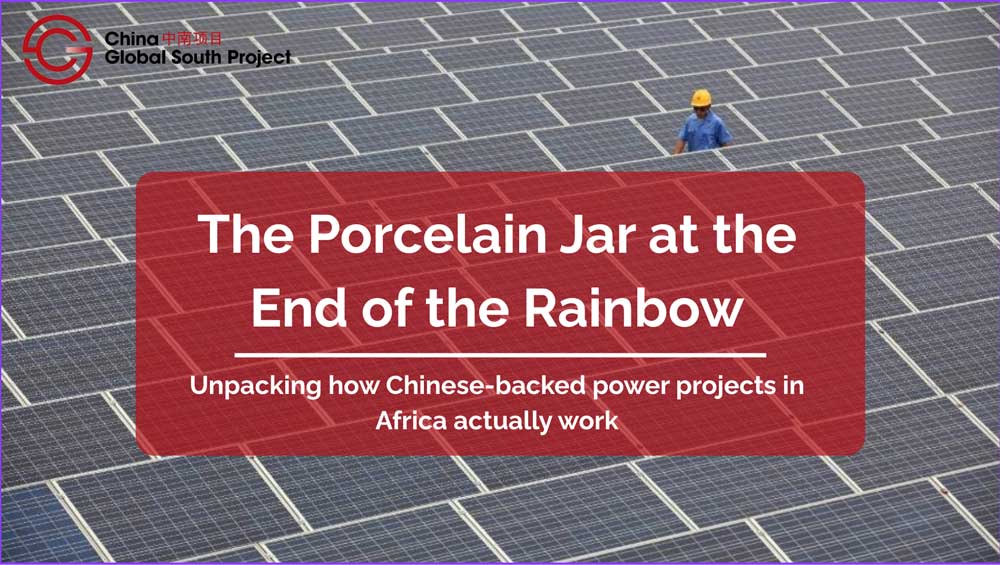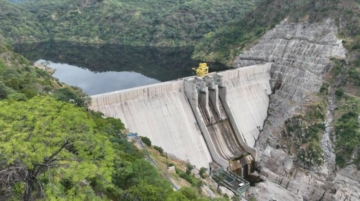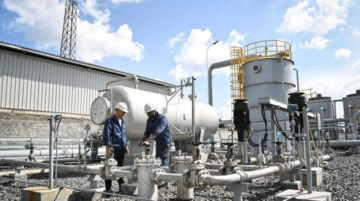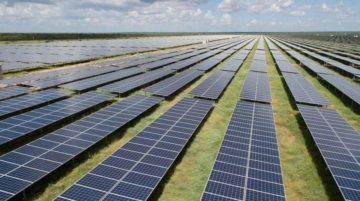
After tracing the arc from planning to procurement, financing to construction, this final installment in Part 1 of The Porcelain Jar at the End of the Rainbow pauses to reflect. What have we learned, not just about China’s engagement in Africa’s power sector, but about the systems, choices, and capabilities that shape infrastructure outcomes more broadly?
Chinese-backed projects offer a window into how infrastructure is financed and delivered under pressure: where power supply gaps are urgent, budgets are constrained, and institutions are still evolving. They expose the trade-offs that governments must navigate when opportunity comes bundled with risk, and when short-term gains may obscure long-term costs. But above all, they highlight a deeper truth: no matter the source of funding or identity of the contractor, it is domestic choices that ultimately determine whether a project succeeds.
This article gathers the key lessons from the journey so far and outlines what they mean for Africa’s infrastructure future.
1. Finance Sets the Frame – But Host States Hold the Brush
The financing models used in Chinese-supported projects, whether state-backed loans, FDI, or resource-backed arrangements, do more than fund infrastructure. They shape project selection, pricing, timelines, and the risks governments absorb. As explored in earlier articles, these models are not immutable. Governments have, in several cases, negotiated better terms: longer grace periods, higher concessional ratios, or rejection of commodity-based repayment.
Understanding what can be negotiated, interest rates, loan mixes, repayment timelines, resource use, is not only important for avoiding unsustainable debt. It also empowers governments to assert their priorities from the outset. Even in state-directed models like EPC+F, African actors are not passive recipients. They are participants whose leverage depends on timing, preparation, and institutional literacy.
2. Procurement Is the Fork in the Road
The way a project is procured often determines everything that follows. Competitive bidding, though far from flawless, introduces transparency, price discipline, and pressure for performance. Even among Chinese EPCs, competition has delivered lower costs and better terms. Conversely, when procurement is bundled with finance or circumvented altogether, governments lose visibility over cost benchmarks and contractor selection.
The path to better procurement is not necessarily to abandon bilateral deals, but to design smarter ones. Governments can run limited competitive processes among pre-approved Chinese contractors, unbundle finance and EPC scopes, or benchmark EPC prices against regional norms. Every layer of visibility improves outcomes.
3. Implementation Is Where Intent Meets Reality
The construction phase is where theoretical plans confront practical constraints. As Part 9 highlighted, even well-structured projects can stumble without adequate technical oversight, milestone verification, or contractual enforcement. Disbursements made directly from policy banks to contractors leave little room for course correction if governments are not continuously present and engaged.
Here, institutional strength, not financial muscle, makes the difference. Ministries that deploy experienced engineers, enforce standards, and hold contractors accountable have consistently fared better. This is a call not just for more projects, but for stronger systems that can manage them.
4. Chinese Engagement Is Not a Monolith
If one myth has been most clearly dismantled in this series, it is the idea of a singular “China Inc.” Chinese involvement in African infrastructure spans policy banks, SOEs, private developers, provincial actors, and commercial lenders. These actors operate with overlapping but often distinct interests. Some compete fiercely in tenders. Others prioritise state-to-state diplomacy or industrial policy.
Recognizing this internal diversity is not academic, it is strategic. When governments treat Chinese engagement as uniform, they miss opportunities to negotiate, structure deals creatively, or pit competing interests against each other to secure better terms. Knowing who sits across the table, and what drives them, is half the battle.
5. Agency Is Built, Not Borrowed
Throughout this series, the most consistent insight has been that outcomes improve where governments assert agency. Not abstract sovereignty, but practical, applied capability. That means knowing when to say no to unfavorable terms. It means building up procurement offices, contract management teams, and regulatory bodies. And it means insisting on alignment between individual projects and long-term energy plans.
Agency is not exercised only during negotiations. It is embedded in how governments prepare, plan, and execute. And it is not something that must wait for external funding or reform. Many of the most effective interventions, like clarifying roles across ministries, benchmarking project costs, or coordinating with utilities, are well within the reach of committed institutions today.
The Bigger Picture: A New Era of Infrastructure Strategy
As global development finance continues to shift, with Western actors scaling back and China adapting its own priorities, African governments face a landscape full of both opportunity and uncertainty. Chinese-supported power projects will remain part of that landscape, but their effectiveness will depend less on China’s policy shifts than on Africa’s own capacity to set the terms.
The next phase must be one of infrastructure strategy, not just project delivery. That means designing bankable pipelines, reforming procurement processes, developing regulatory clarity, and investing in technical capacity. It also means viewing infrastructure as a system, where planning, finance, delivery, and oversight must all be coordinated.
China may provide the bricks and mortar, but the blueprint must be African. And that blueprint must be grounded in transparency, value for money, and long-term sustainability.
Looking Ahead
With this tenth article, Part 1 of The Porcelain Jar at the End of the Rainbow concludes. We have moved from motivations to finance, from bidding to building, unpacking how Chinese-supported power projects actually work. Part 2 will shift the lens to a new set of questions: What makes some projects succeed where others falter? What country- and project-level factors shape delivery, sustainability, and long-term impact? How do macroeconomic stability, legal frameworks, and political context affect outcomes? In other words, what separates a power plant that delivers for decades from one that becomes a stranded asset or debt burden? These are the questions that Part 2 will tackle, drawing not just from contracts and capital flows, but also from lived experiences across the continent.

About This Series
This article is part of “The Porcelain Jar at the End of the Rainbow,” a new series from the China Global South Project that unpacks how Chinese-backed power projects in Africa actually work. As global development partners shift and electricity demand rises, understanding China’s role — from financing and procurement to project delivery — has never been more important. Each installment offers practical, field-informed insights for policymakers, developers, and researchers navigating complex infrastructure environments.
The series is complemented by CGSP’s interactive Energy Tracker, a tool that maps Chinese-supported power generation projects across Africa, including data on capacity, financing, ownership, and implementation status.










